What Does Adding Warmth to a Space Actually Mean? Experts Weigh In
Invite soft, cozy feels into your home.
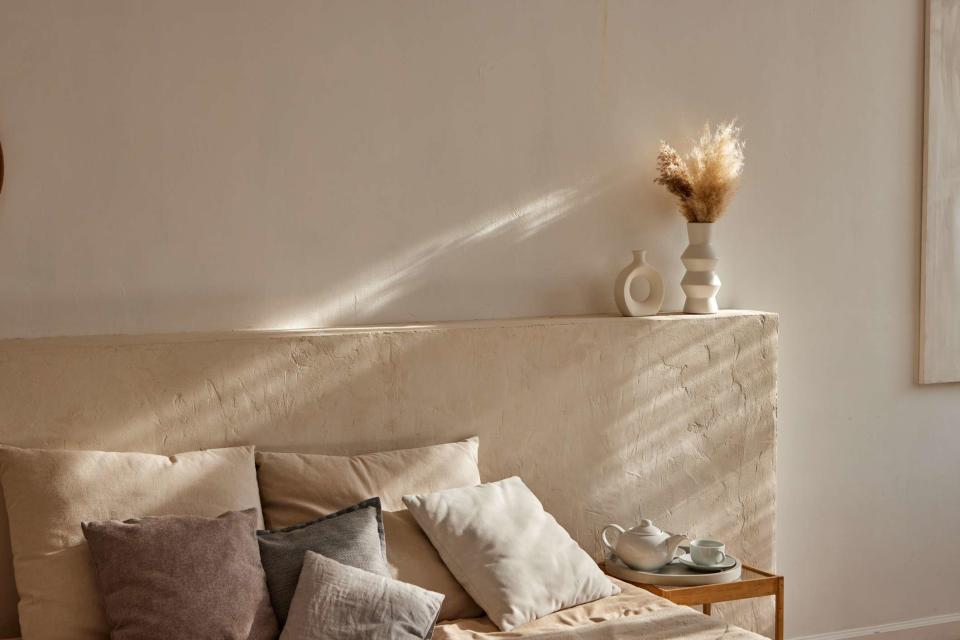
Ekaterina Demidova / Getty Images
Warmth on the skin feels good physically, but a warmly decorated home? A treat for the eyes and soul.
As it turns out, creating a warm space goes beyond using a heater. Hence, we consulted a couple of experts in the decor world to break down what adding warmth to a room means—in the design sense—and share their top tips so you, too, can create a cozy cocoon that you never want to leave.
What Does Adding Warmth to a Space Mean?
After chatting with the design pros, a few keywords stood out: welcoming but intimate and layered with cozy character.
In other words, adding warmth is about creating an inviting space, one that evokes a sense of comfort and coziness when you walk in and makes a house feel like a home—as Rayana Schmitz, founder and lead designer of Firefinish Interiors, puts it.
Think of the “warm aesthetic” as the complete opposite of cold, sterile, and impersonal interiors. It appeals to all senses and better yet, is enjoyable to be in.
8 Tips for Adding Warmth to Your Home
Wooden Accents Are a Must
Experts agree: spaces with wooden accents appear a lot warmer than those with mainly metal and glass pieces. Whether wood paneling, parquet flooring, timber beams, a chunky coffee table, or wooden shelving, nothing says natural warmth like this versatile material.
Floss Kelly, co-founder of TileCloud, and her team never fail to incorporate wooden elements in the bathrooms and kitchens they design, noting that the organic touch easily contributes to a cozy atmosphere.
“It doesn't have to be solid timber,” Kelly shares. “Timber laminate or other fake wood options give a similar look for a more wallet-friendly price tag.”
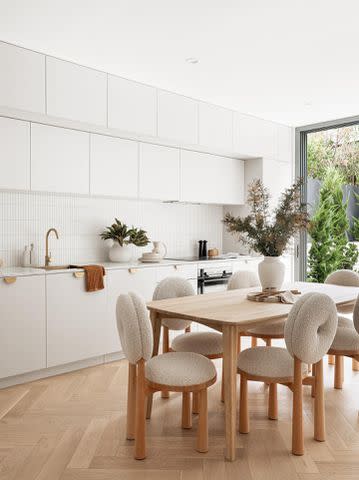
Design by @tilecloud & @mihbuilt / Photo by @joshuahill____
Play Around With Textures
Let’s be honest, monotonous interiors with little variation are rarely warm and inviting. Thankfully, this is where texture comes into play.
“Think plush rugs, tactile fabrics, and inviting throws that not only provide physical warmth but also visually enrich the space,” Schmitz says.
Likewise, Emily Auffrey, home decorator and blogger behind Joy Blooms At Home, is a big fan of mixing and matching textures such as rattan, boucle, chenille, and suede.
She goes on to suggest using wall hangings like woven macrame and tapestries or going the fancy route with faux fur as a throw. Don’t forget you can introduce texture through curtains and window shades, too!
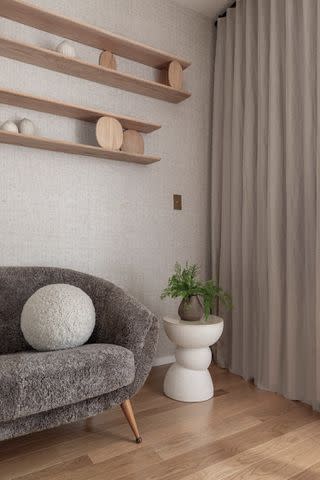
Design by @yaelweissinteriors / Photo by @sketchfortytwo
Incorporate Warm and Inviting Colors
By no means should you throw out all your non-warm-toned furniture and repaint your entire home. In fact, Kelly notes that balancing light and dark colors can significantly impact the warmth of a space.
“Lighter colors at eye level create a sense of cleanliness and airiness, while deeper tones near the floor add richness without overwhelming the space,” she says. That is to say, your dark sofa can stay—just offset it with warmer-hued accents.
As for color choices, you don’t have to solely stick to safe, creamy neutrals (talking about you, beige). Earthy tones—like deep green, chocolate brown, and mustard yellow—along with rich shades—such as burgundy—all translate into a feeling of visual warmth without screaming “boring” or “typical”.
Plus, there are tons of easy, low-commitment ways to weave these inviting hues into your design scheme.
For example, you could swap out your bedding, hang removable wallpaper, bring in a new rug, replace your lamp shades, or stretch a slipcover over your couch, to name a few.
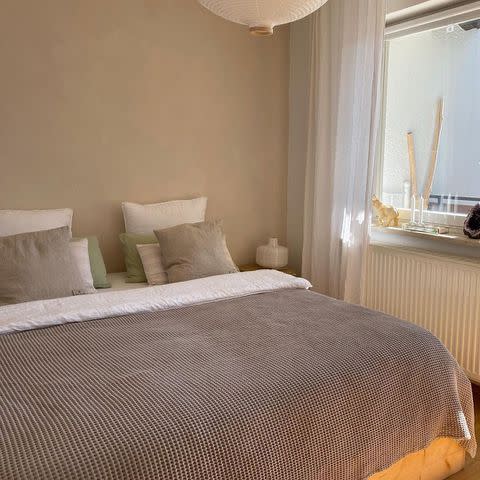
@afrobohemianliving / Instagram
Rethink Your Lighting
Lighting holds more power than we think. It can affect our mood (both positively and negatively) as well as make a space look bigger or smaller.
Yet, many of us settle for harsh overhead ceiling lights—you know, the ones that give off a cool tone, keeping us alert and energetic at hours we should be relaxing and winding down.
Schmitz highly recommends opting for soft (soft white bulbs are her choice), layered lighting with a mix of ambient and task lighting to create a welcoming glow.
And of course, it wouldn’t be a warm ambiance without candles on the coffee table, fireplace mantel, bathroom counter, and every other (safe!) surface.
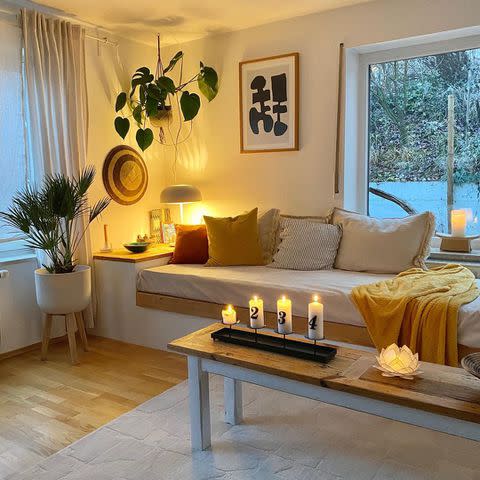
@afrobohemianliving / Instagram
Turn To Plants
Feel like something’s missing in your space? Nine times out of ten, it’s plants.
“Adding greenery, whether it's herbs or leafy plants, introduces a natural element that inherently adds warmth,” Kelly says. Besides softening hard lines with their organic shape, houseplants bring much-needed color and zen, among an abundance of health benefits.
Take a cue from Auffrey, who filled her living room with lots of leafy greens (pictured below). Imagine walking into that room and instantly feeling calm and at ease—that right there is what a warm design style exudes.
Tip
Contrary to popular belief, plants don’t have to be expensive. Take a trip to your local nursery, propagate existing plants, or start from seeds for a budget-friendly alternative.
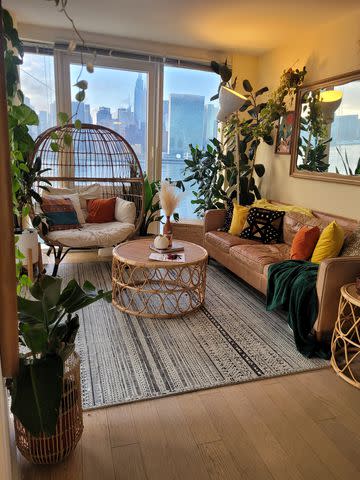
Add Charming Vintage Elements
“As a lover of vintage and historical themes, I personally think adding yesteryear elements tends to immediately telegraph warmth to a space,” shares Sam Jernigan, interior designer of Renaissance Design Consultations.
For this reason, she went ahead and designed her home using both antiques as well as reproductions that incorporate a step-back-in-time appeal.
“These classics are also timeless so they deliver the added benefit of never "going out of style",” she asserts.
Some vintage pieces you may want to consider adding to your collection include: ornate mirrors, a carved armchair, a chest, and bronze accessories (especially those with patina).
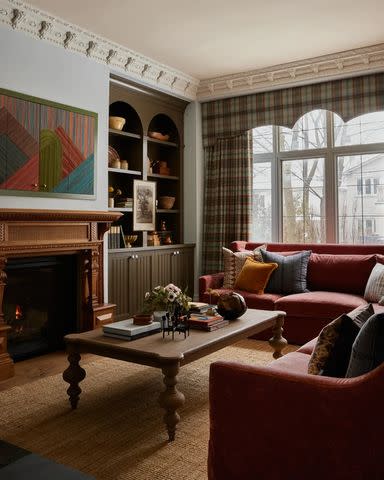
Introduce Soft Lines
If possible, Jernigan advises introducing some softer lines in furnishings and/or architecture.
“Curves, ovals, and gentler lines tend to create more visual flow versus arresting the eye with stark linear lines or sharp angles,” she says.
Round ottomans, sculptural vases, egg chairs, and wavy headboards are great options here.
If buying new furniture isn’t in the cards right now, try arranging your seating in cozy clusters to soften up the area (which also allows for easy conversation). Bonus points if you include baskets with blankets and pillows inside, which definitely helps bring the comfy factor up a notch, Auffrey assures.
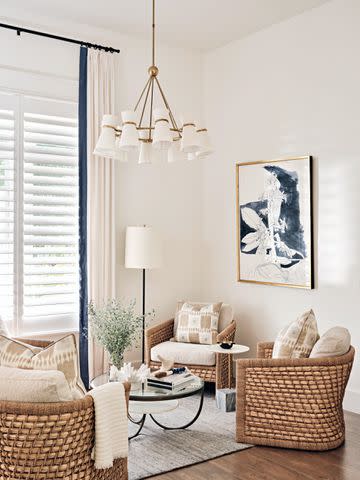
Design by Firefinish Interiors / Photo by Dan Cutrona
Create a Space That Reflects Your Personal Style
When all is said and done, the key to a warm, lived-in home is individuality. Don’t be afraid to experiment with different decor styles, patterns, and color combinations until your space feels like your very own sanctuary—this applies to renters, too!
“Include personal touches such as family pictures or scenes that evoke a cozy feeling such as a still life of a floral bouquet,” Auffrey suggests. Here’s your sign to adorn your shelves with trinkets that make you happy, paint your walls a dramatic color, and buy that piece you’ve been eyeing for a while.
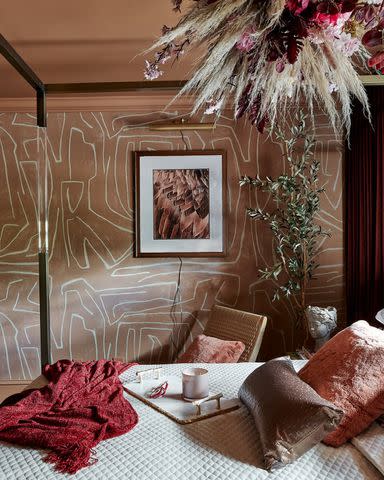
Read Next: 25 Charming Ideas to Make Your Apartment Feel Cozier
Read the original article on The Spruce.

